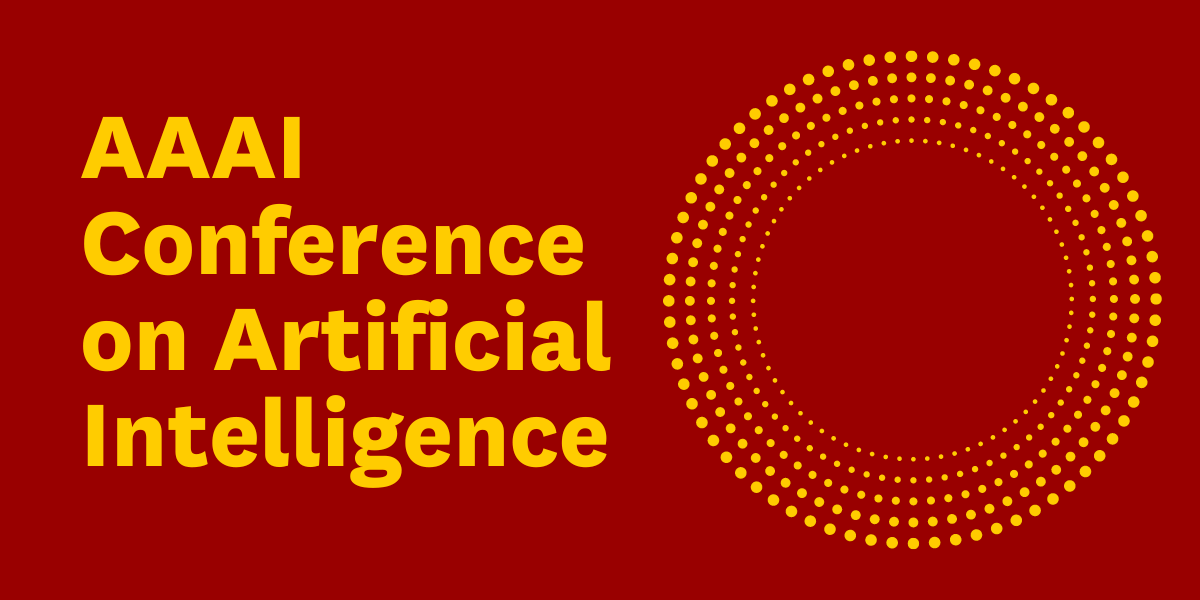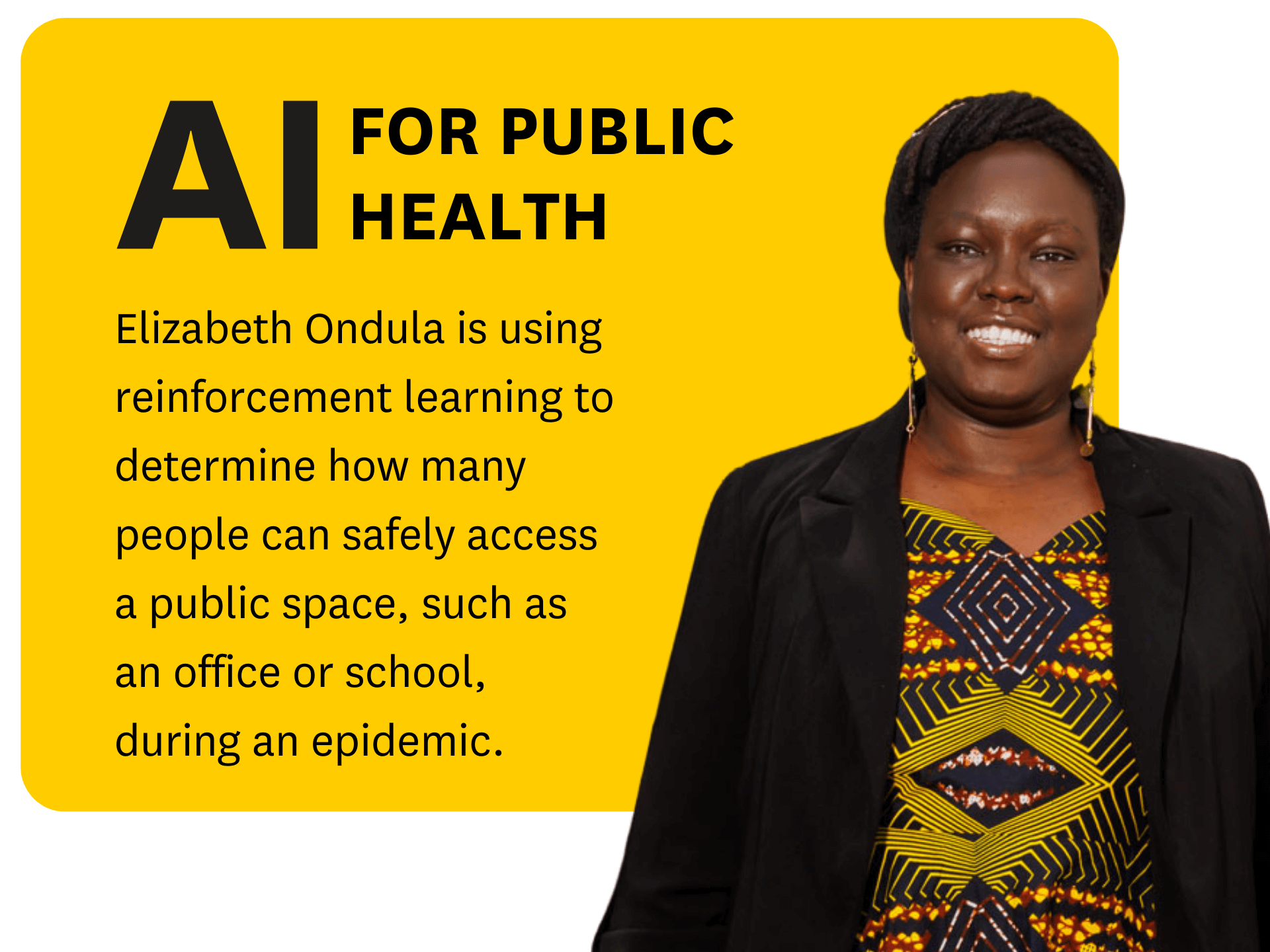
The Thirty-Eighth AAAI Conference on Artificial Intelligence (AAAI-24) was held in Vancouver, British Columbia.
From developing AI for pandemic policies to coordinating autonomous agents and addressing bias in machine learning, USC researchers presented their latest findings at the 38th Annual AAAI Conference on Artificial Intelligence in Vancouver, BC, February 20-27. As one of the world’s leading conferences in artificial intelligence, the AAAI conference series aims to promote research in artificial intelligence (AI) and foster scientific exchange between researchers, practitioners, scientists, students, and engineers across AI and its affiliated disciplines. Dive into some of the highlights in this research roundup.
Featured Research

The first time Elizabeth Ondula thought about using technology to improve public health was when she faced a personal tragedy during the COVID-19 pandemic. Her father died and she was unable to travel for his burial due to pandemic restrictions. “It was a challenging time,” said Ondula. “The travel restrictions made me wonder why public health policies are static, and how these strategies could be more adaptable to evolving conditions.”
Now a doctoral student in computer science at USC, Ondula’s research examines how policymakers and administrators can leverage AI to prepare for an infectious disease outbreak. On Feb. 21, Ondula will present her research on “Navigating Uncertainty in Epidemic Contexts with Reinforcement Learning” at the Association for the Advancement of Artificial Intelligence (AAAI) doctoral consortium.
“What this research brings to the table is an understanding of the impact of various policies,” said Ondula. “If you prepare and plan well, you can minimize the risk of serious illness or death, while responding to rapidly evolving conditions.”
Featured Research

From smart virtual assistants and self-driving cars to digital health and fraud prevention systems, AI technology is transforming almost every aspect of our daily lives—and education is no different. For all its promise, the rise of AI, like any new technology, raises some pressing ethical and equity questions.
How can we ensure that such a powerful tool can be accessed by all students regardless of background?
Inspired by this call to action, USC researchers have created a low-cost, accessible learning kit to help college and high school students build their own “robot friend.” Students can personalize the robot’s “body,” program the robot to mimic their head posture, and learn about AI ethics and fairness in an engaging, accessible way.
The system is outlined in a new study, titled “Build Your Own Robot Friend: An Open-Source Learning Module for Accessible and Engaging AI Education,” presented this week at the AAAI Conference on Artificial Intelligence, education symposium track.
Featured Research
AI holds the potential to revolutionize healthcare, but it also brings with it a significant challenge: bias. For instance, a dermatologist might use an AI-driven system to help identify suspicious moles. But what if the machine learning model was trained primarily on image data from lighter skin tones, and misses a common form of skin cancer on a darker-skinned patient?
This is a real-world problem. In 2021, researchers found that free image databases that could be used to train AI systems to diagnose skin cancer contain very few images of people with darker skin. It turns out, AI is only as good as its data, and biased data can lead to serious outcomes, including unnecessary surgery and even missing treatable cancers.
In a new paper published at the AAAI Conference on Artificial Intelligence this week, USC computer science researchers propose a novel approach to mitigate bias in machine learning model training, specifically in image generation.
Tell us about your AAAI paper:
Thomy Phan, Computer Science Postdoctoral Scholar
Adaptive Anytime Multi-Agent Path Finding Using Bandit-Based Large Neighborhood Search
Thomy Phan; Taoan Huang; Bistra Dilkina; Sven Koenig
“Our paper proposes an adaptive algorithm for coordinating many autonomous agents in pathfinding scenarios relevant to logistics, search and rescue, fleet management, etc. The release of multi-modal language models such as Gemini that come with advanced reasoning capabilities is related since our algorithm also performs complex reasoning on an abstract level that could be potentially used for such applications. The algorithm can benefit a wide range of people who work with multiple robots in different domains, such as warehouse or fleet operators, and people working in retail, manufacturing, or construction.”
David Kempe, Professor of Computer Science
Proportional Representation in Metric Spaces and Low-Distortion Committee Selection
Yusuf Kalayci; David Kempe; Vikram Kher
“How do you select a small subset of documents (images/text) so that each subset of your whole document collection is represented proportionally to its size? Similarly, how do you select a committee such that each cohesive subset of the population is represented roughly proportionally to its size? We propose a clean and natural way to quantify what this representation goal should be, and how to accomplish it quite well, even when each voter only ranks the candidate (rather than being able to quantify exactly how similar the candidate is). This could benefit officials in charge of election rules (in particular for committees or larger bodies), possibly city planners, and anyone wanting to condense document collections to small representative sets.”
Furong Jia, Computer Science Undergraduate Student
GPT4MTS: Prompt-based Large Language Model for Multimodal Time-series Forecasting
Furong Jia; Kevin Wang; Yixiang Zheng; Defu Cao; Yan Liu
“When we make predictions, like forecasting stock market trends or anticipating the effects of news events, we often rely on past numerical data. But numbers don’t tell the whole story. Just like in our daily lives, where we consider both facts and narratives to make decisions, combining numerical data with textual information can provide a more comprehensive picture. In our research, we introduce a new approach to blend these two types of information for more accurate predictions. My work is all about bringing together words and numbers to make complex information easier to understand and more complete for everyone. For example, epidemiologists can combine health news with data together to better understand and predict diseases.”
All USC-Affiliated Papers
VLN-Video: Utilizing Driving Videos for Outdoor Vision-and-Language Navigation
Jialu Li; Aishwarya Padmakumar; Gaurav Sukhatme; Mohit Bansal
Quality-Diversity Generative Sampling for Learning with Synthetic Data
Allen Chang; Matthew C. Fontaine; Serena Booth; Maja J. Matarić; Stefanos Nikolaidis
Proportional Representation in Metric Spaces and Low-Distortion Committee Selection
Yusuf Kalayci; David Kempe; Vikram Kher
Adaptive Anytime Multi-Agent Path Finding Using Bandit-Based Large Neighborhood Search
Thomy Phan; Taoan Huang; Bistra Dilkina; Sven Koenig
Build Your Own Robot Friend: An Open-Source Learning Module for Accessible and Engaging AI Education
Zhonghao Shi; Allison O’Connell; Zongjian Li; Siqi Liu; Jennifer Ayissi; Guy Hoffman; Mohammad Soleymani; Maja J. Matarić
Conformal Prediction Regions for Time Series Using Linear Complementarity Programming
Matthew Cleaveland; Insup Lee; George Pappas; Lars Lindemann
GPT4MTS: Prompt-based Large Language Model for Multimodal Time-series Forecasting
Furong Jia; Kevin Wang; Yixiang Zheng; Defu Cao; Yan Liu
Towards Automated, Scalable, and Reproducible Anomaly Detection
Yue Zhao
Learning Fair Policies for Multi-Stage Selection Problems from Observational Data
Zhuangzhuang Jia; Grani A Hanasusanto; Phebe Vayanos; Weijun Xie
MIDDAG: Where Does Our News Go? Investigating Information Diffusion via Community-Level Information Pathways
Mingyu Derek Ma; Alexander K. Taylor; Nuan Wen; Yanchen Liu; Po-Nien Kung; Wenna Qin; Shicheng Wen; Azure Zhou; Diyi Yang; Xuezhe Ma; Nanyun Peng; Wei Wang
Self-Supervised Bird’s Eye View Motion Prediction with Cross-Modality Signals
Shaoheng Fang; Zuhong Liu; Mingyu Wang; Chenxin Xu; Yiqi Zhong; Siheng Chen
Finite-Time Frequentist Regret Bounds of Multi-Agent Thompson Sampling on Sparse Hypergraphs
Tianyuan Jin; Hao-Lun Hsu; William Chang; Pan Xu
Nowcasting Temporal Trends Using Indirect Surveys
Ajitesh Srivastava; Juan Marcos Ramirez; Sergio Díaz; Jose Aguilar; Antonio Fernández Anta; Antonio Ortega; Rosa Lillo
Efficient Toxic Content Detection by Bootstrapping and Distilling Large Language Models
Jiang Zhang; Qiong Wu; Yiming Xu; Cheng Cao; Zheng Du; Konstantinos Psounis
Consortiums, Workshops, and Posters
(Doctoral Consortium) Navigating Uncertainty in Epidemic Contexts with Reinforcement Learning
Elizabeth Akinyi Ondula
Ke Shen
(Poster) Learning Backdoors for Mixed Integer Programs with Contrastive Learning
Bistra Dilkina, Taoan Huang, Junyang Cai
(Workshop) Learning Optimal, Robust, and Fair Decision-Trees for Prediction and Prescription using IMO
Phebe Vayanos
(Poster) Differentially Private Prediction of Large Language Models
James Flemings, Murali Annavaram, Meisam Razaviyayn
Published on February 26th, 2024
Last updated on May 16th, 2024













